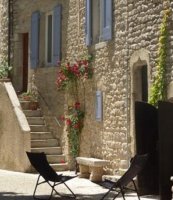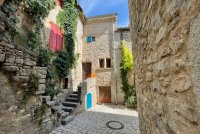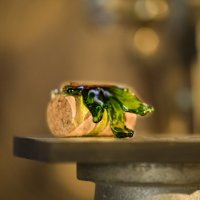Notre-Dame-de-Londres
- Bus - Ligne 608
- Historical heritage
- Prehistoric heritage
- Medieval village
A small medieval village, Notre-Dame-de-Londres is marked by its history, through its castle and its Romanesque church, and is also famous for its tambourine matches.
The Roquefeuil family, one of the most illustrious in the Languedoc, had a large presence in the area and the castle of Notre-Dame-de-Londres was one of their possessions in the garrigues. Built in the middle of the 16th century by one of its members, it nevertheless retains features marked by the military architecture of the Middle Ages.
Next to it stands a small listed church watched over by the statue of a blue-clad virgin. Behind the ramparts, pierced by doors and windows, you will find a charming square.
If you stop at Notre-Dame-de-Londres, come and watch a tambourine match. If the sport appeals to you, stop at the weekend, in the summer, at the exit of the village. Matches of this traditional sport are played there with panache, notably during the French championships.
What is the origin of "London"? In Celtic times, Llyn dinas, which became the city of London, designated "the hill of the pond" for our English neighbours. In Languedoc, Loundro would have meant "mud, stagnant water" and the terms Lundras, Lundrias, Doundras, which after mutation gave London, were used in medieval writings to characterise our now dried-up valley.
Nevertheless, it is often drowned in the mist that escapes from the once swampy ground.

Mairie de Notre-Dame-de-Londres
Avenue du Pic Saint-Loup
04 67 55 71 29
Site Internet
Mail
Facebook
Heritage and culture in Claret
- Le Réseau Vert®, du Mas Neuf à Roussières.
- London Castle (16th and 17th century, private)
- Romanesque church (11th and 12th century)
- Caves, dolmens, tumuli, necropolis
- "Saint-Pierre village
- Dovecote (15th century)
- Medieval or Gallo-Roman bridge
- Glass tradition
- Tambourine
The partners of the Tourist Office du Grand Pic Saint-Loup in Notre-Dame-de-Londres :



 NOTRE-DAME-DE-LONDRESIn the heart of the picturesque medieval village of Notre Dame de Londres, come and discover our 4-person gîte. The Montpellier hinterland (30 minutes north...
Discover
Book
NOTRE-DAME-DE-LONDRESIn the heart of the picturesque medieval village of Notre Dame de Londres, come and discover our 4-person gîte. The Montpellier hinterland (30 minutes north...
Discover
Book




 NOTRE-DAME-DE-LONDRESIn a fully renovated historic building located in the stunning Upper Hérault Valley, just 30 km north of Montpellier, discover "Mas Bouvier," a haven of...
Week from 1.225,00 €
Discover
Book
NOTRE-DAME-DE-LONDRESIn a fully renovated historic building located in the stunning Upper Hérault Valley, just 30 km north of Montpellier, discover "Mas Bouvier," a haven of...
Week from 1.225,00 €
Discover
Book




























